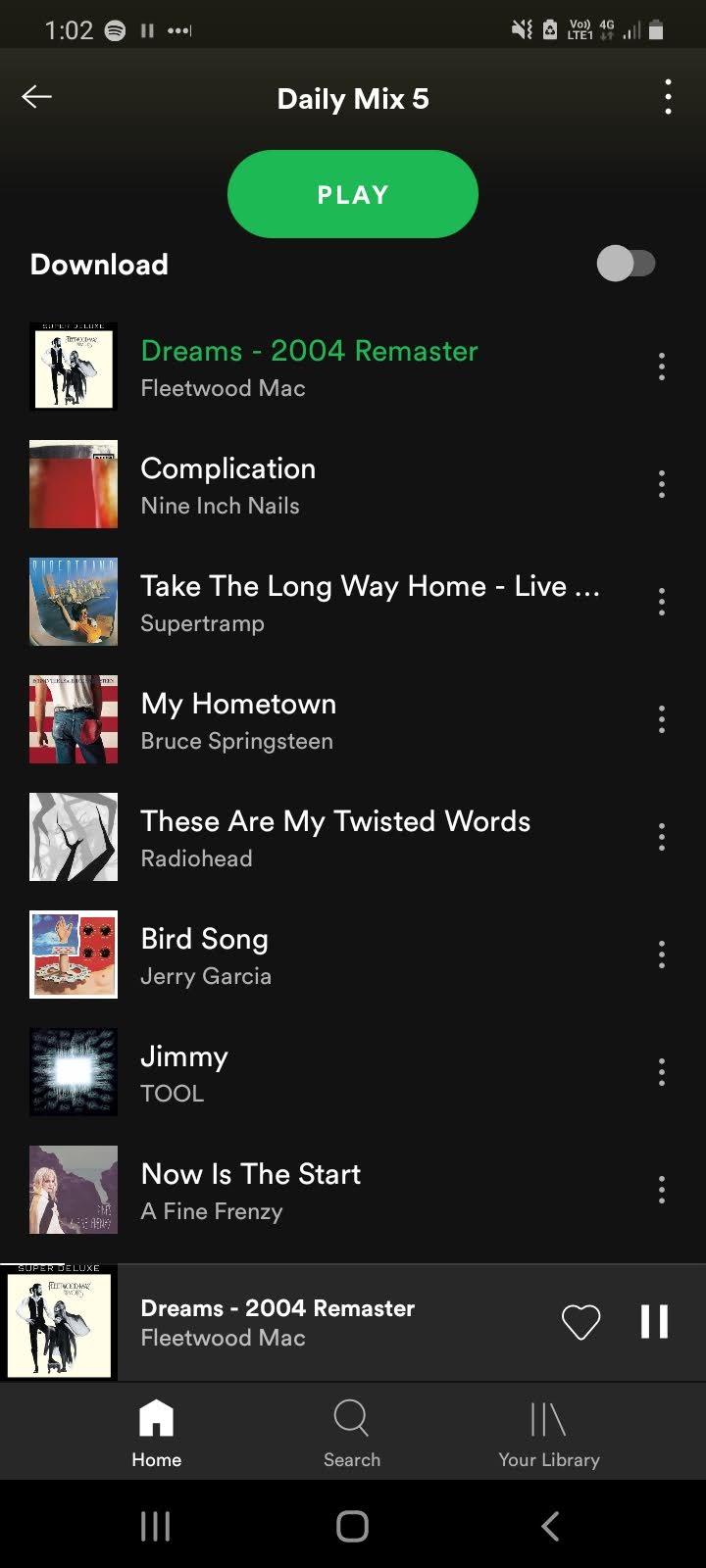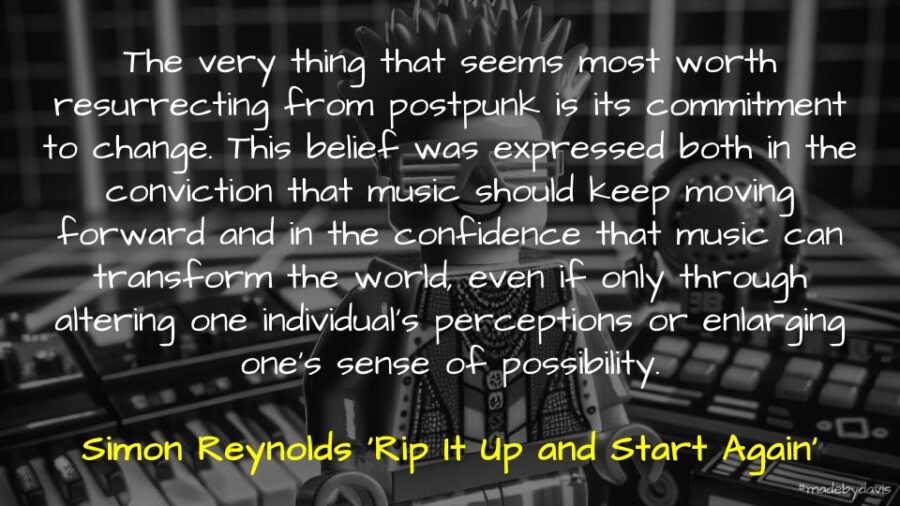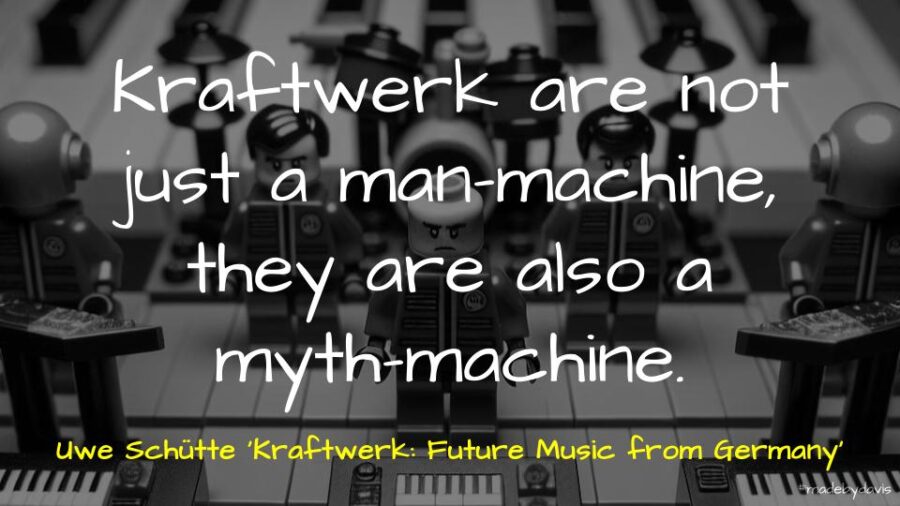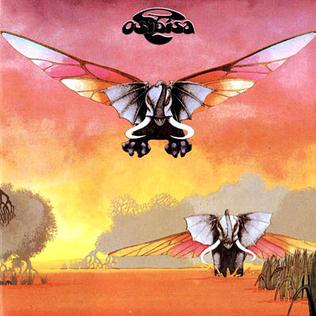After doing a deep dive into The Go-Betweens, I was looking for a new artist to delve into their discography, so I decided to dive into the world of Custard.
In part, I was left intrigued by the cross-over between Custard and The Go-Betweens. For example, Dave McCormick and Glenn Thompson had served as Robert Forster’s backing band for a time in Forster’s post Go-Betweens era, while Thompson was a part of the reformed Go-Betweens line-up. They were also integral to putting together Write Your Adventures Down, the tribute album to The Go-Betweens after Grant McLennan’s death.
I was also inspired after seeing Dave McCormack perform an acoustic set supporting The Fauves. I have never seen Custard live and was not sure what to expect. What I was privileged with was a solo set of deep cuts, classics and a countrified cover of Taylor Swift’s ‘Blank Space’. Although I had read about McCormack’s country and western origins (COW) in Andrew Stafford’s Pig City.
Robert Moore had imagined COW as a musical collective similar to the Wild Bunch behind the first Massive Attack album, where a virtual reserve bench of musicians would be on call to play gigs or recordings. Often the band would be joined on stage by backing vocalists the Sirloin Sisters, twins Maureen and Suzie Hansen; at other times, former Go-Between John Willsteed and occasional Queensland Symphony Orchestra violinist John Bone would jump up to add their own flourishes.
SOURCE: Andrew Stafford – Pig City: From the Saints to Savage Garden
This never made sense with the image of Custard that I had from the 90’s.
Lastly, I was left wondering by Damian Cowell’s comment on the Take 5 Podcast reflecting on the 90’s zeitgeist. Talking about Custard, he suggested that it was important to leave listeners with something more:
Use your power wisely … Treat them to an anchovy.
All this left me feeling that maybe there was more to hear and that maybe it was time to give Custard the time of day.
Custard were formed in Brisbane in the early 90’s. Although they have had various line-ups over their time, the classic line-up has been Dave McCormack on guitar and vocals, Paul Medew on bass, Matthew Strong on guitar and Glenn Thompson on drums. As a member of McCormack’s other project COW (Country or Western), Thompson was actually always around. For example, he was involved with creating the artwork associated with Custard’s first release Buttercup / Bedford.
They have had two distinct periods, their initial time in the 90’s until they disbanded in 2000, and their reformation in 2010’s. Their time in the 90’s stood in contrast to the dour grunge sound dominant at the time.
Although they’ve obviously been listening to the Pixies as well as Pavement, unlike many other bands of the ’90s they studiously avoided the Seattle sound, preferring to indulge in pop hooks and resolute cheerfulness.
Source: Brisbane 1990-1993 Review – AllMusic by Jody Macgregor
Or as McCormack reflected upon, they wrote “melancholy song that you could listen to a few times.”
“It’s that whole realisation that people like The Go-Betweens can have on you,” Dave McCormack said. “On the balance of things, no one wants to hear a happy throwaway song. I don’t really. I wanna hear a sad, melancholy song that you could listen to a few times. That’s something we came to realise and therefore that’s what we wanted to do.”
Source: Classic Album – Custard – Loverama by ABC Listen
During this time they worked with producers such as Eric Drew Feldman (Captain Beefheart, PJ Harvey, Pere Ubu, Augie March et al.) and Magoo (Regurgitator, Midnight Oil et al.) They were a part of the music industry being turned upside down.
The alternative boom of American bands meant Australian major labels and commercial radio were more willing to take a punt on Aussie bands, putting a guitar band like You Am I, who formed in 1989, in a prime position.
…
The alt-rock boom in Australia kicked off in earnest in 1994, building and bubbling to its own boiling point as it had in 1991 in the US.
Source: 1991 saw the music industry turned upside down, and 30 years later, its echoes remain by Matt Neal
In contrast, their later work is often a little more subdued and has largely been self-produced by Glenn Thompson, although it never quite sits comfortably within ‘Adult Contemporary’ even if it has come out through ABC Records.
Although it often feels like Dave McCormack is portrayed as the face of the band, one of the things that I had never appreciated is how the rest of the band all play their part, often contributing their own songs to the mix. When asked by Lindsay McDougall about what make a Custard song in an interview for Respect All Lifeforms, McCormack explained that it was everyone adding their piece.
There’s sketches of the song and you throw it out to Paul, Glenn and Matthew and then they play it back to you and you say “ahhh, it’s a Custard song” … that nice sort of organic interchange.
Source: Dave McCormack and Custard Respect All Lifeforms by Lindsay McDougall (SoundCloud)
In some ways that may seem self-obvious, but listening to some of the other projects that McCormack has been a part of, there is a similarity and difference. I think that there is something to be said about the chemistry of the band.
It was interesting watching Jonathan Alley’s documentary Love in Bright Landscapes and the pressures put on The Triffids by the record labels with Calenture. I was left wondering if something like this never happened with Custard as the band was always bigger than the individual and maybe that is why they actually initially disbanded?
Listening to the albums, I started with Buttercup Bedford. Although their ‘first’ album, it is both hard to find (not on Spotify) and possibly intentionally forgotten.
Due to its self-published nature, the album has not appeared on any streaming sites and has largely been a rarity to find online, with most sites links to download no longer working. Dave McCormack has expressed that maybe it should stay offline.
Source: BUTTERCUP (BEDFORD) by Custaro.fans
With the majority of the album recorded in eight hours after winning Australian Academy of Music’s Encouragement Award prize of $500 recording time, it felt to me like jangly pop on speed.
David McCormack: That’s when the drugs really came into play, around that time . . . In 1988–89 it was all speed, acid, ecstasy had just hit. And because we had nothing to do – we’d basically finished our degrees and were on the dole, and we were white middle-class kids from Kenmore – we could just get out of it forever. That’s why Who’s Gerald? broke up. We’d be speeding for days on end.
SOURCE: Andrew Stafford – Pig City: From the Saints to Savage Garden
The ‘second’ album, Brisbane 1990 – 1993, combines the Gastanked and Brisbane EPs. It is full of ideas and influences. As soon as you think a song will be one thing, something unexpectedly disrupts this.
These songs capture Custard in lo-fi during the period when they were a group of Pavement fans writing quirky but straightforward love songs like “I Just Want to Be with You” and “Edie,” which has two chords — E and D. David McCormack‘s excitable little-boy tone can be heard taking shape while he sings oddball lyrics like “I had too much to dream last night” in “Satellite,” his rewrite of “Goodnight, Irene.” The self-descriptive “Short Pop Song,” which manages to cram in three tunes’ worth of material despite its 1:14 running time, shows the way toward later reflexive efforts like “Hit Song.”
Source: Brisbane 1990-1993 Review – AllMusic by Jody Macgregor
Wahooti Fandango continues the joyful chaos associated with pasting ideas together to somehow find some semblance of coherence. It often feels like each song is almost in contrast with itself.
Drawing on a vast array of influences (from the art-rock of Pere Ubu, Devo and Sonic Youth to country ballads and big band swing), Custard’s casual, whimsical approach to their own music often masks the degree of craft underlying songs.
Source: Wahooti Fandango by Wikipedia
Produced by Eric Drew Feldman in Hyde St Studios, Wisenheimer feels less contrasting than Wahooti Fandango, but each track still seems to jump between a different genre, whether it be the angular rock guitar one minute with ‘GooFinder’, to leaning back into the country origins with ‘Leisuremaster’. With sixteen tracks in under 40 minutes, you never really get to settle as a listener. Even the slower tracks fly on by.
Continuing on from the other albums in bouncing between pop, surf, stoner, country and rock, I feel We Have the Technology is best described as seriously silly. Although each track seems to make its own statement in itself, they feel like they are contrasted with how they are organised on the album.
We Have The Technology caught McCormack in an ornery mood. Heavily under the influence of Pavement’s Wowee Zowee, also made at Easley Studios, McCormack’s songs were growing ever more tangential and self-referential. And consequently, the music – as a review of another Brisbane band had earlier suggested – ‘disappeared up its own arse’.
David McCormack: I remember Eric Drew Feldman sitting me down in some diner saying, ‘Look, you’ve got to have a radio single, you’ve just got to have one . . . Go as crazy as you want, but you need three or four radio songs so the band can keep going, you can’t just ignore that stuff,’ and he was right. But I was just like, ‘No, man, we’re fucking artists!’ It’s maturity . . . If I could go back, there would be a lot of decisions I would make differently.
The release of Thompson’s Music Is Crap as a single in February 1998 painted the band into a corner.
Source: Pig City by Andrew Stafford
For me, there are just too many flavours on the plate with this album. It balances between genius, chaos and who cares. What remains after all is said and done is a certain catchiness that pervades throughout.
Teaming up with Magoo, Loverama is a case of ‘same, same, but different’. Although it is roughly the same length as previous albums, there are not as many tracks. Although the same ingredients are present, whether it be distorted guitar, slide guitar, weird effects, quirky lyrics, I feel it is the placement of the drums and bass in the mix seems to hold the songs together and provide a semblance of continuity.
“I was happy to do something that wasn’t as throwaway as some of the other ones [songs on earlier albums],” McCormack said, although he was aware his intentions might not land in the same way for listeners.
“I’m sure everyone else would think it’s an overtly happy and quirky Custard record. But I think for us, we could listen to it and go, ‘ah yeah that’s right, that was fucked when that happened.’”
Source: Classic Album – Custard – Loverama by ABC Listen
After this album, the band disbanded, with members going off in different directions and different projects.
They began playing odd concerts again in 2009, however their next album Come Back, All is Forgiven did not come out until 2015. Although it begins with a more laidback country rock feel – maybe Custard Goes Country – they still have the knack of throwing a spanner into the mix that extends allows it to pivot. Craig Mathieson described it as a ‘welcome visit’.
Despite the title, for Custard the new album isn’t so much a career comeback as a welcome visit
Source: Dave McCormack’s Custard comes back (and all is forgiven)) by Craig Mathieson
Similarly, The Common Touch is also bit more subdued than some of their earlier albums, but it feels like this space gives the opportunities for the hooks and harmonies to really flourish. For me, it is one of those albums that the more I listened, the more I could not help sing along with.
“In the ’90s it was much more of an ongoing concern that we were a professional music group, so you had to constantly think about how to make people interested in you again. How could we get people to our gigs? How do we get songs on the radio? And none of those factors really come into the equation now. Now it’s like, ‘What’s the most interesting songs we can write and record and release?’ “
And there’s no shortage of those on The Common Touch, a varied and focused record that shows the band’s eagerness to move beyond their quirky slacker pop “golden days”.
“This is the first time I sat in my spare room in Bexley and just went, ‘Right, every day I’m going to sit down and make myself available to write songs.’ So for about three or four weeks, five days a week, I’d just sit in the room and make stuff up.”
Source: From the ’90s to now, Custard haven’t lost their common touch by Bronwyn Thompson
In contrast, Respect All Lifeforms feels like a return to the ebbs and flows of We Have the Technology and Loverama. Unlike Come Back, All Is Forgiven and The Common Touch, which both open with slower more somber tracks and a touch of country, this albums kicks off with a bang with ‘Couples Fight’. The album then bounces around from there. Gone is the lap steel and harmonica. It also does not wear the criticism of ‘Adult Contemporary’ made against their last two albums so well. Noel Mengel argues that what makes a Custard album is this ebb and flow throughout.
But what is so enjoyable about Custard’s music is not that it can be defined in any neat way but that it can’t. Pop-rock with guitars it might be, but there is a lot going on that rewards play after play. And it always sounds just like them.
Source: Respect All Lifeforms. Custard by Noel Mengel
In addition to sounding like them, there is something to be said about their lyrics throughout.
In an acceptance speech for the Nashville Songwriters Association International award for Songwriter-Artist of the Decade, Taylor Swift shared three genres associated with her lyrics.
I categorize certain songs of mine in the “Quill” style if the words and phrasings are antiquated, if I was inspired to write it after reading Charlotte Brontë or after watching a movie where everyone is wearing poet shirts and corsets.
…
Fountain pen style means a modern storyline or references, with a poetic twist.
…
Frivolous, carefree, bouncy, syncopated perfectly to the beat. Glitter Gel Pen lyrics don’t care if you don’t take them seriously because they don’t take themselves seriously.
Source: Taylor Swift Explains Her Three Types Of Lyrics In Nashville Songwriters Association Awards Speech by Tom Breihan
Thinking about Custard, I feel that there are possibly three types of Custard lyrics:
- Songs that capture a particular topic or situation (i.e. ‘Apartment’)
- Songs about a person (maybe auto) (i.e. ‘Lez Pinball’)
- Songs about … songs (i.e. ‘Hit Song’)
However, the more I listened with this framework in mind, it felt somewhat contrived to fit the songs into such rigid categories.
Noel Mengel suggests that what ties Custard’s songs together is an eye for the normal everyday:
You could say Custard have been writing about normal lives and everyday situations since 1990.
An easy hook but not entirely accurate. As with any songwriting the key to such local observations is to create something interesting and lively rather than banal. Or in Custard’s case, interesting, lively and sometimes outright hilarious. Which is in keeping with all the exuberance and energy at the heart of their pop-rock musical style
Source: Respect All Lifeforms. Custard by Noel Mengel
I feel that this is what Cowell was touching upon when referring to ‘anchovies’ in his discussion of Custard on the Take 5 Podcast.
Another element to their songs is that they always seem to enter halfway through a story or a scene. I remember reading something similar from Bono talking about U2’s song ‘One’:
“I like to start a song halfway through a conversation,” Bono says. “As with a lot of dialogue, you very often find yourself talking around the subject rather than through it.” The first lines came quickly: “Is it getting better or do you feel the same?/ Is it any easier on you now that you’ve got someone to blame?” The chorus emerged from an exchange between Bono and the Dalai Lama, who had invited U2 to contribute to a benefit concert called Oneness. Bono politely declined, signing the letter: “Lovely to correspond. One but not the same, Bono.”
Source: Why U2’s One is the ultimate anthem by Dorian Lynskey
For Custard, it is always a conversation, but where the listener is often left scrambling for any semblance of context. It is often akin to a story stripped of everything deemed as superfluous. Sometimes this can be disorientating. As Cowell touched upon with regards to ‘Nice Bird’, when McCormick sings, “Trey’s got the feathers and a 12-gauge shotgun.” We are left wondering who Trey is and why does he have a shotgun? As McCormack touched upon regarding ‘Min Min Lights’ with Lindsay McDougall.
I just got this sketch of an idea. The more mysterious it is the better
Source: Dave McCormack and Custard Respect All Lifeforms by Lindsay McDougall (SoundCloud)
Inspired by McCormick’s comments in their 90’s zine about reading Cormac McCarthy, I was intrigued by Graeme Wood’s comment that “characters are what matters.”
The Shakespeare is no coincidence—and of course Shakespeare, too, was weak on plot; as William Hazlitt and later Bloom affirmed, the characters are what matter. McCarthy’s Sheddan is an elongated Falstaff, skinny where Falstaff is fat, despite dining out constantly in the French Quarter on credit cards stolen from tourists. But like Falstaff, he is witty, and capable of uttering only the deepest verities whenever he is not telling outright lies. Bobby Western regularly shares in his stolen food and drink, and their dialogue—mostly Sheddan’s side of it—provides the sharpest statement of Bobby’s bind.
Source: The Incandescent Wisdom of Cormac McCarthy By Graeme Wood
I think that in some respects that the same could be said about Custard. Although McCormack and Thompson may not be William Shakespeare and Cormac McCarthy, it does feel that they do have an eye for character and description over plot.
It is a strange experience slowly listening through a bands oeuvre one album at a time, I feel it is impossible by nature of the exercise not to judge each album against the previous. Sometimes I wonder if you start to hear ghosts after awhile, with one album bleeding into another. For example, I would find myself making assertions, such as this album is more straight-forward or has a different feel when it comes to instrumentation, only to then question myself as many of the ingredients are present in their earlier work. I think that this maybe what Caroline Polachek was touching upon in regards to the challenges associated with album reviews:
Music criticism is not a review of the album you just made, its a review of your career up to that point.
Source: This Generation’s Caroline Polachek by Switched on Pop
Growing up, I remember buying a copy of We Have the Technology at Cash Convertors. My guitar teacher was encouraging me to play the surf rock tune ‘Memory Man’ as a part of my Year 12 group music performance. I knew the singles, such as ‘Anatomically Correct’, ‘Nice Bird’ and ‘Music is Crap’ and feel that past me probably skipped to those tracks on my CD player or computer, but I fear that I never gave the album the patience it probably deserved or needed.
In a review of Loverama, the comment was made that if something was bad it was meant to be.
If something’s bad, that’s what they meant to do, it’s them having fun.
Source: Custard – Loverama (album review) by blueyxd
Maybe this comment is as much about the tendency for the band in the 90’s spending hours and hours perfecting their early albums in the studio. However, I also think that this could probably be read as “if something seems bad.” I feel you have two choices with Custard, you either accept them and their music and come to respect it for what it is or you do not. Younger me never quite reconciled with who they were, therefore I never quite respected it.
This left me wondering if Custard are one of those bands that are best considered as something of a Rorschach test.
The Rorschach test is a projective psychological test in which subjects’ perceptions of inkblots are recorded and then analyzed using psychological interpretation, complex algorithms, or both. Some psychologists use this test to examine a person’s personality characteristics and emotional functioning.
Source: Rorschach by Wikipedia
The music never gets too serious, but is serious none the less, while it never gets too silly, but is silly none the less. The interpretation of the music can then be considered a reflection of the listener. Some listeners take away with them the distorted rock, some the steel string, some the jangly pop. (Thinking about my group music performance, I feel that I could have just played Custard songs and I would have been able to tick all the requirements for my set?) With so much often going on all at once, there is always so much to take in.
I am glad I dived back into the music of Custard. It left me thinking differently about what music could and maybe should be. In the end, I learned to stop worrying and love Custard.











